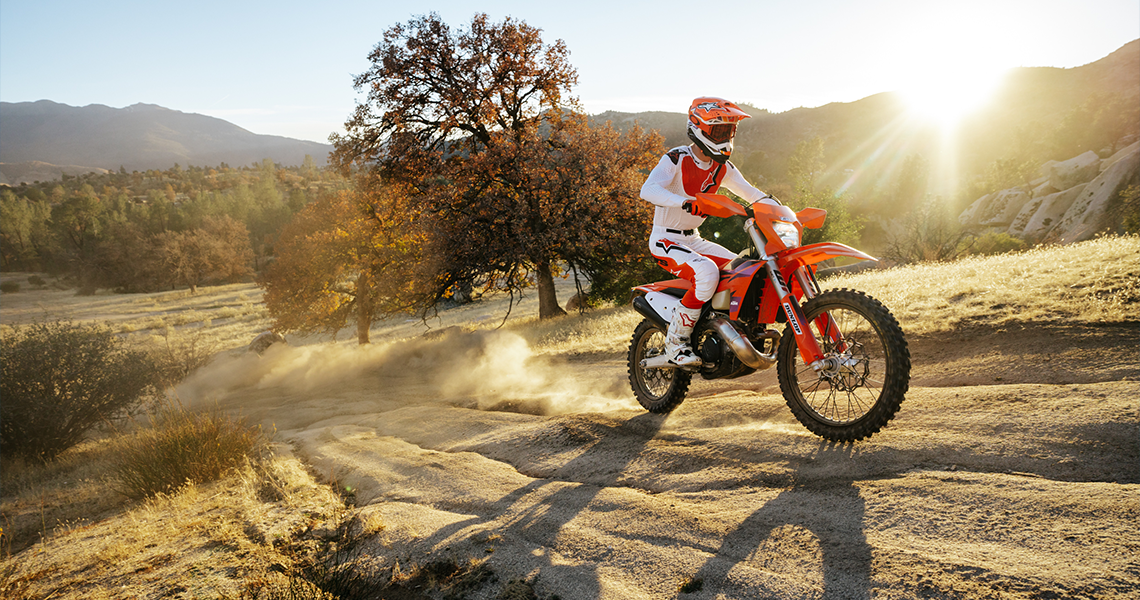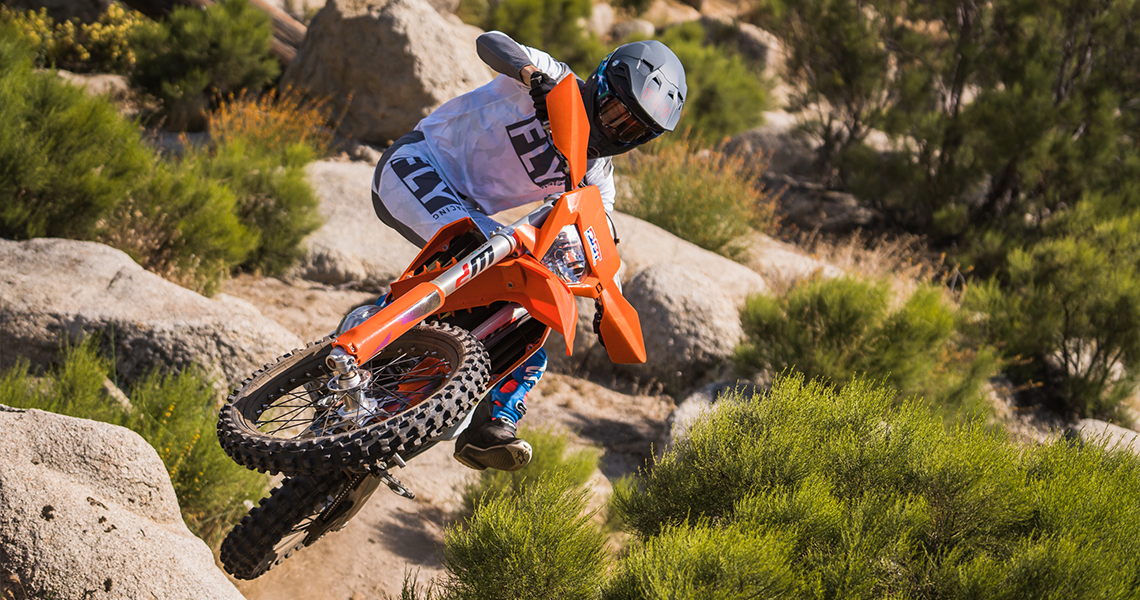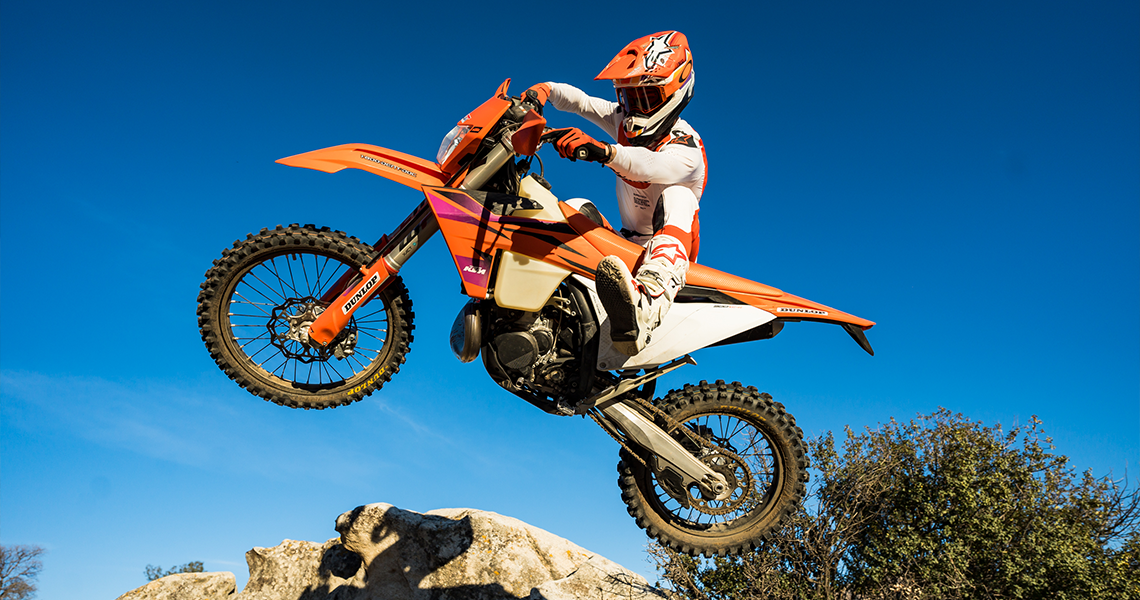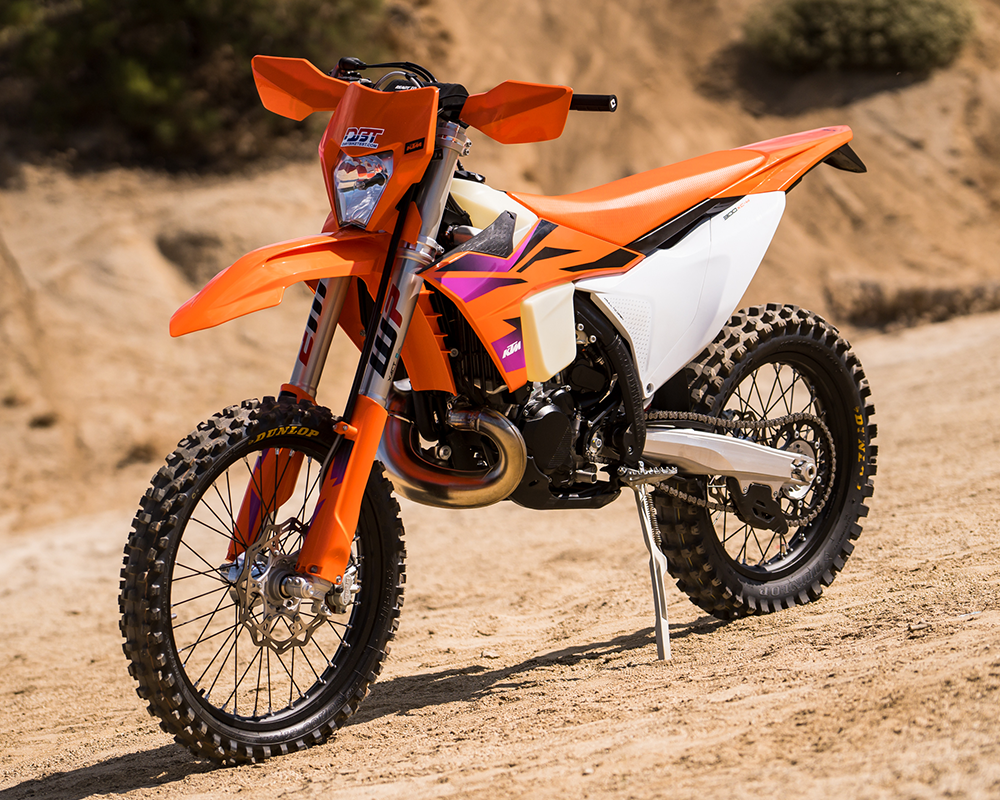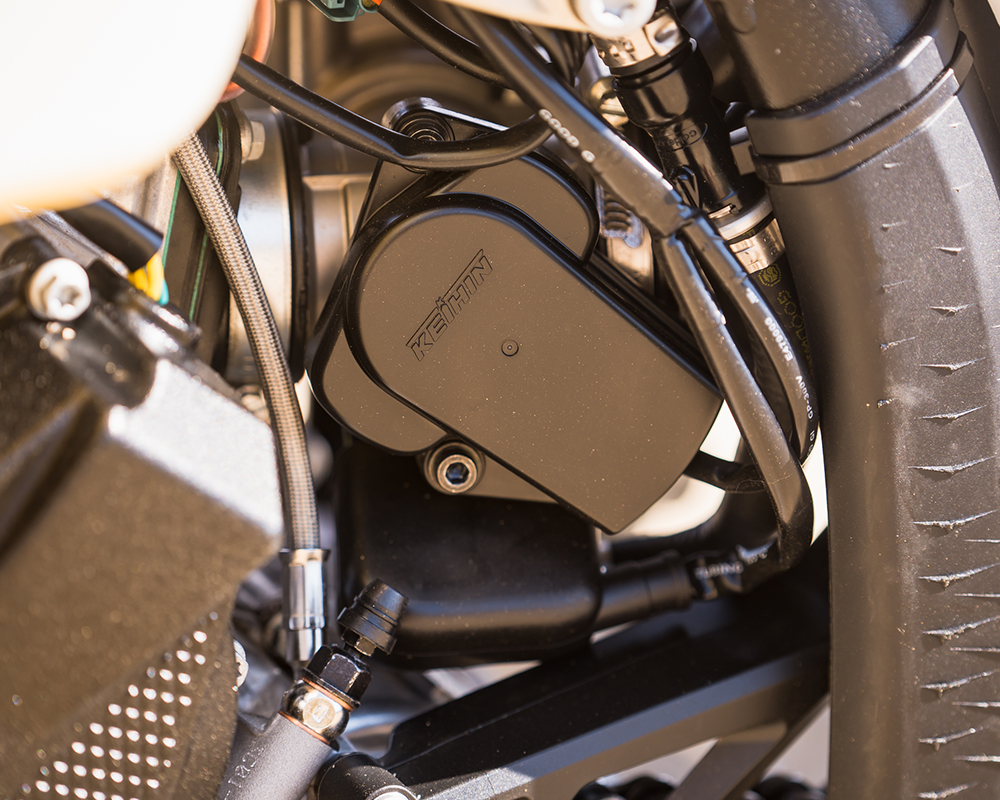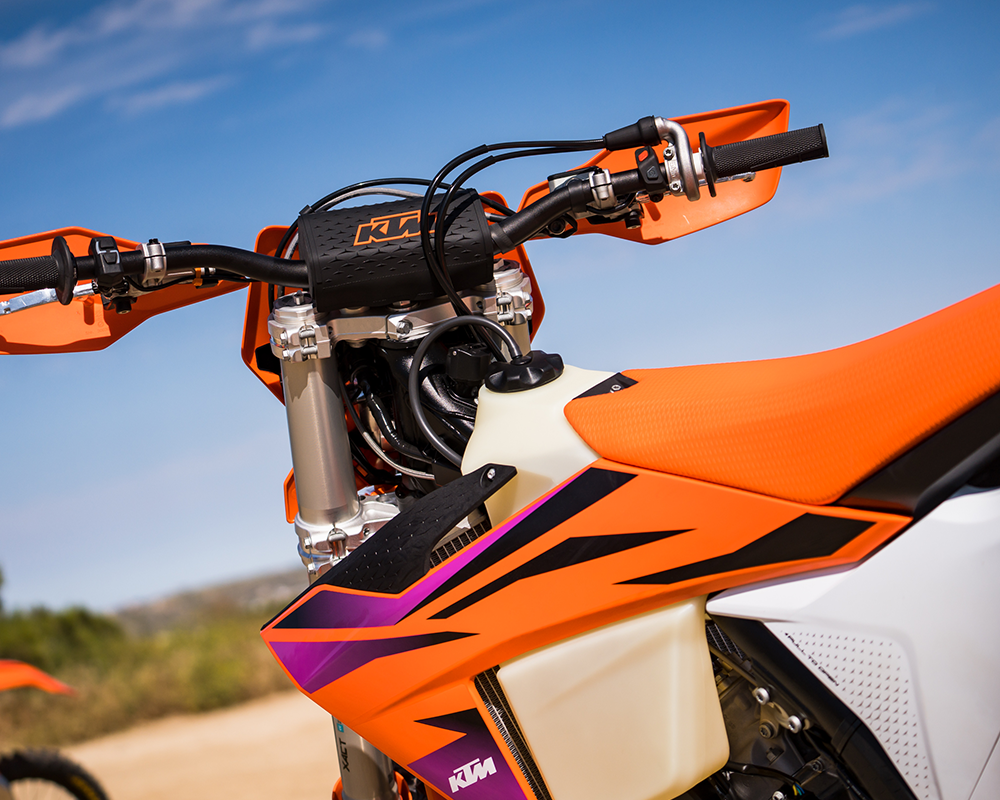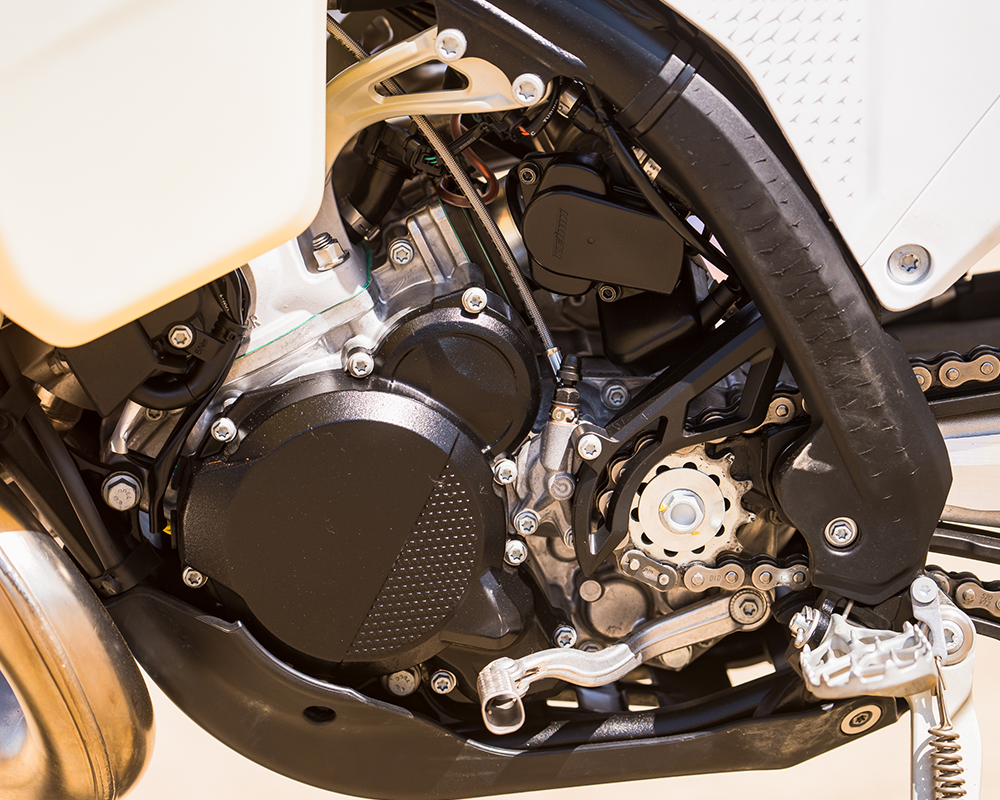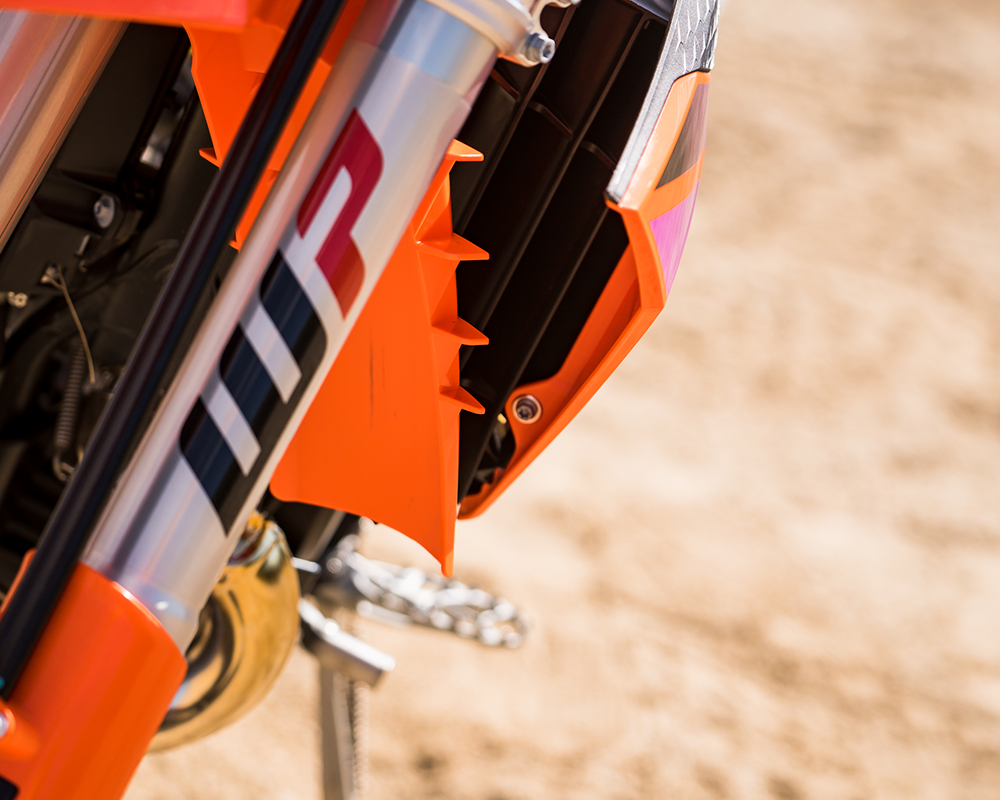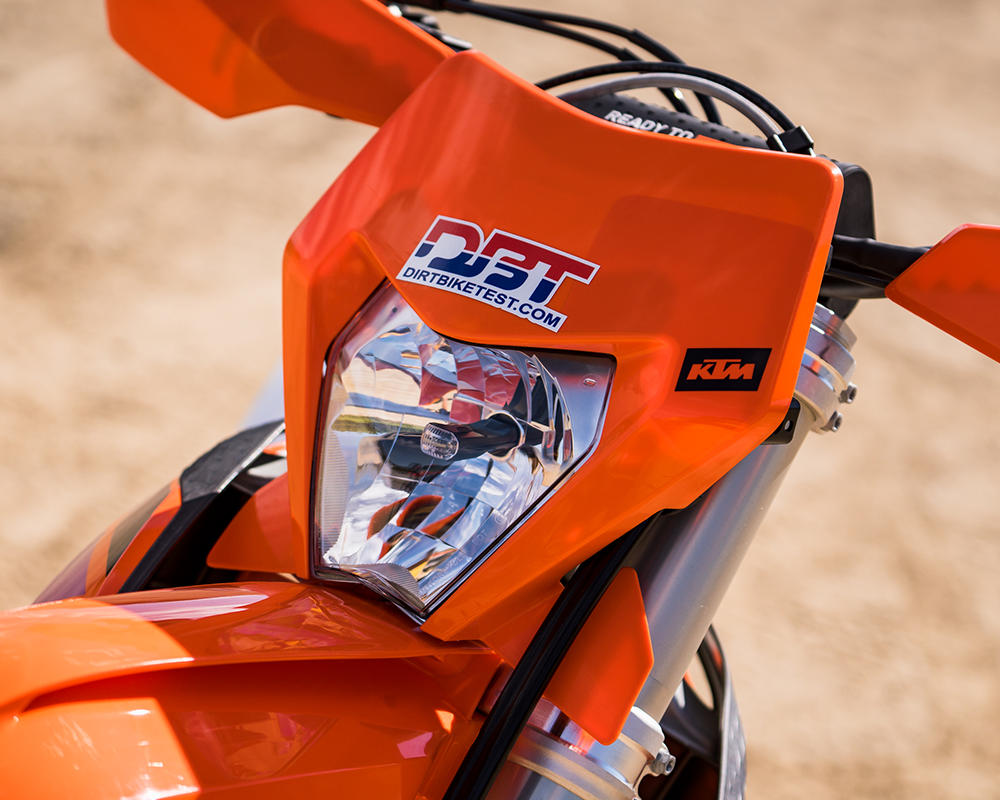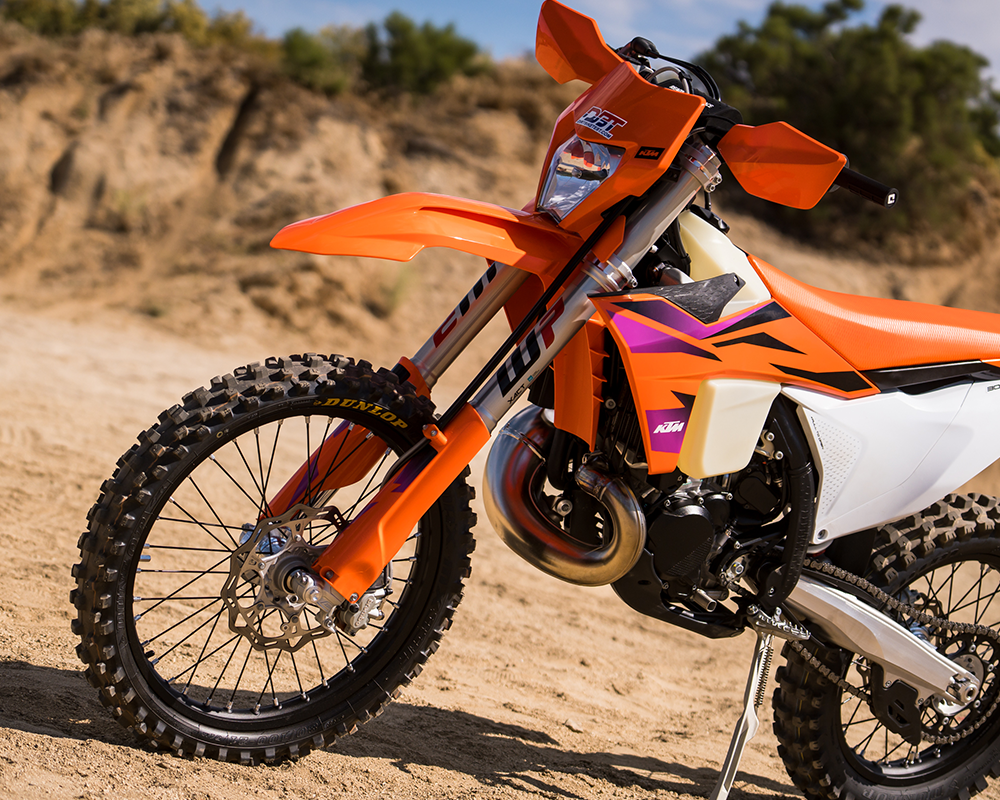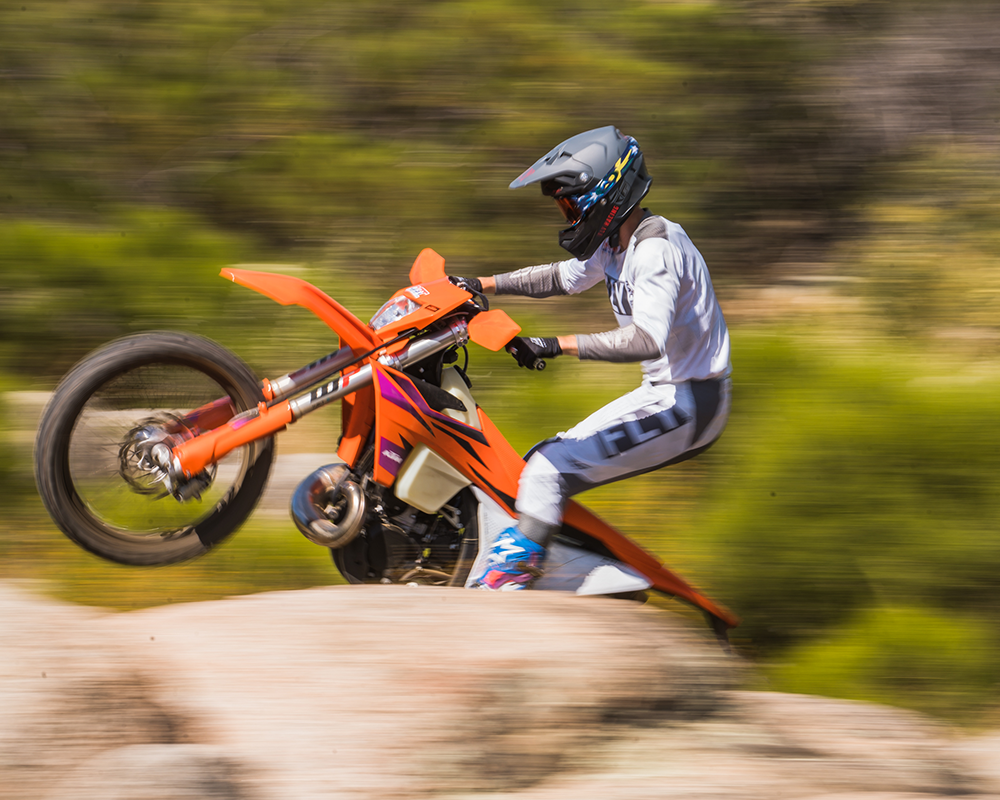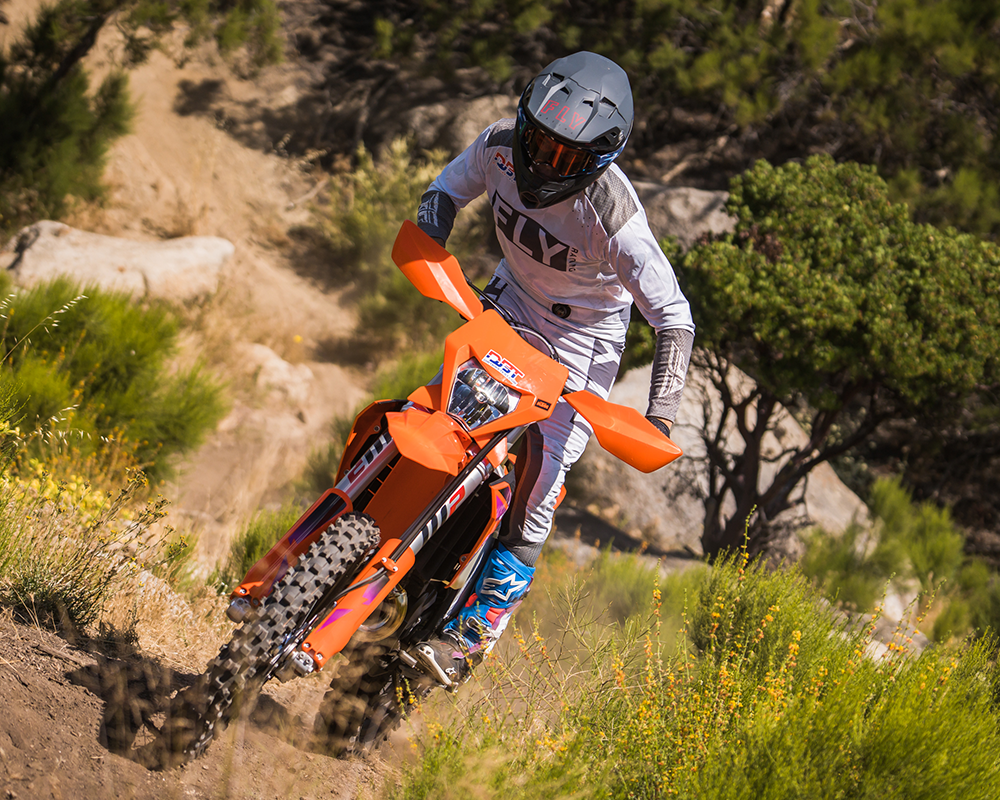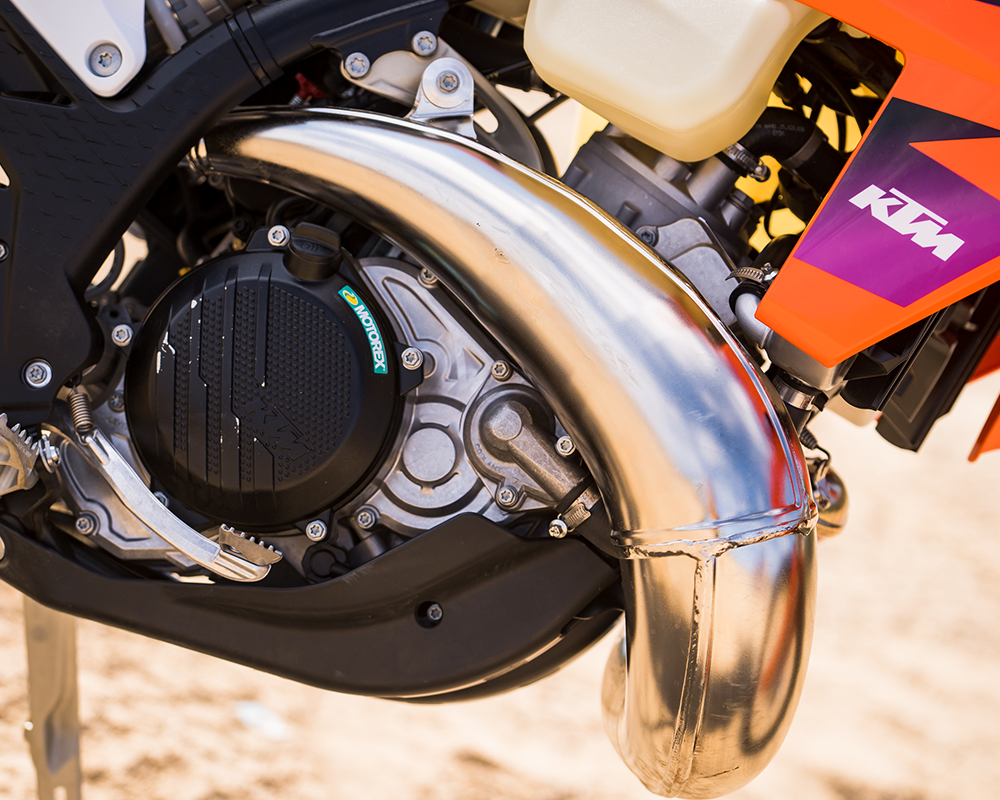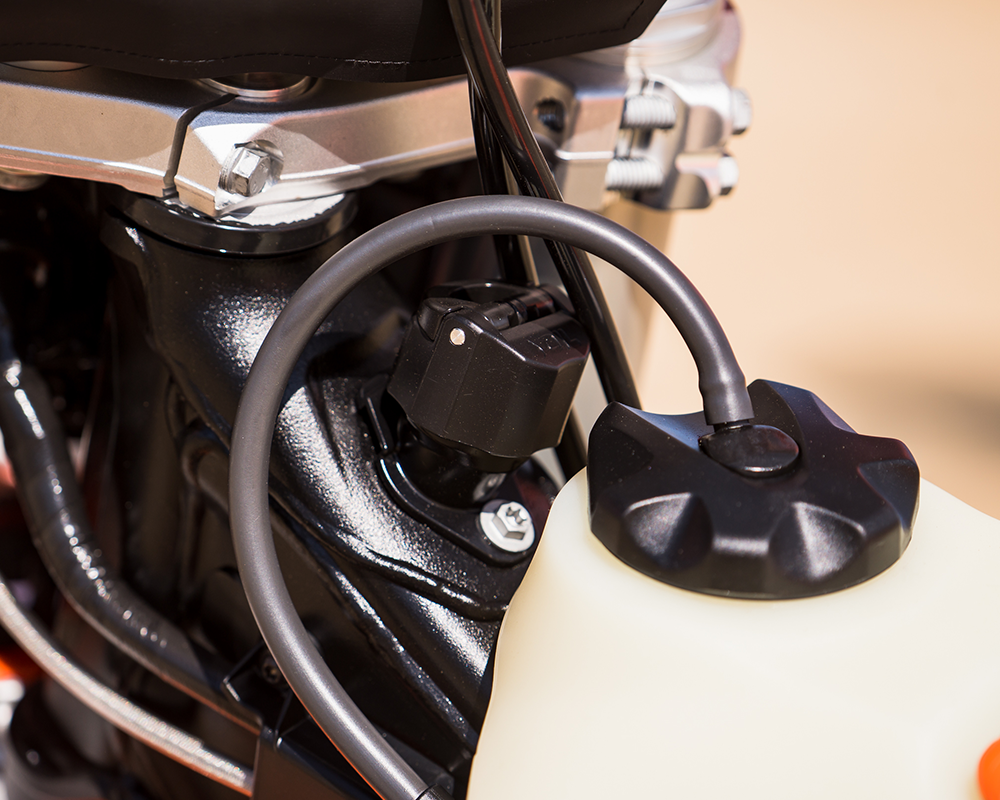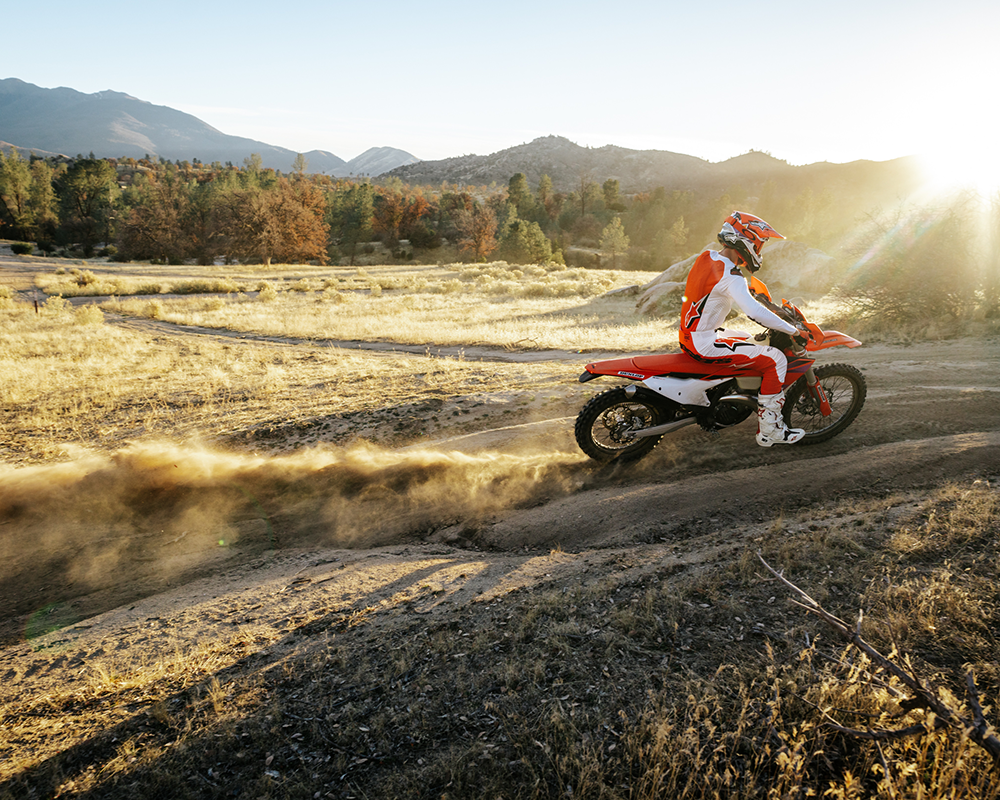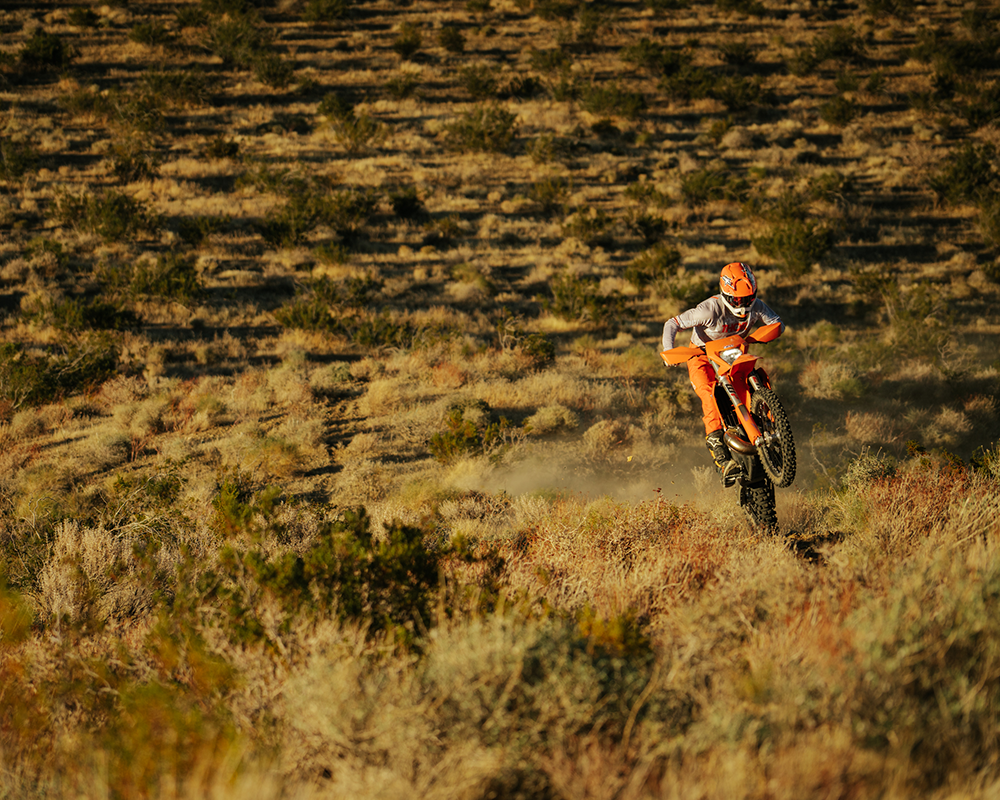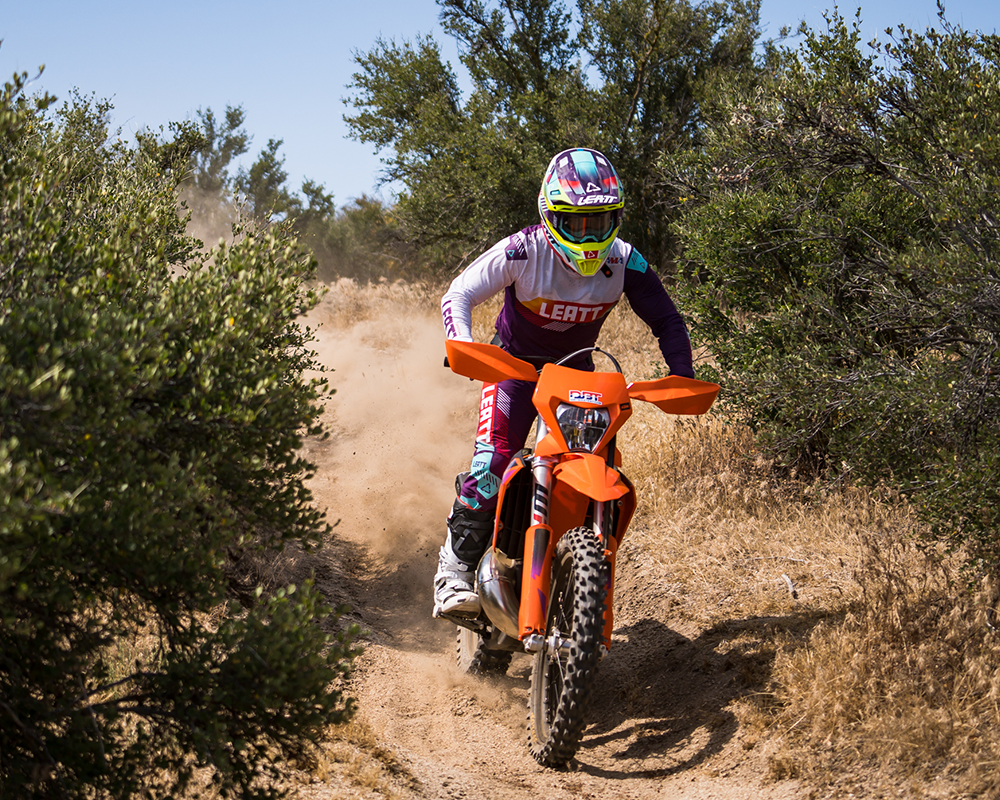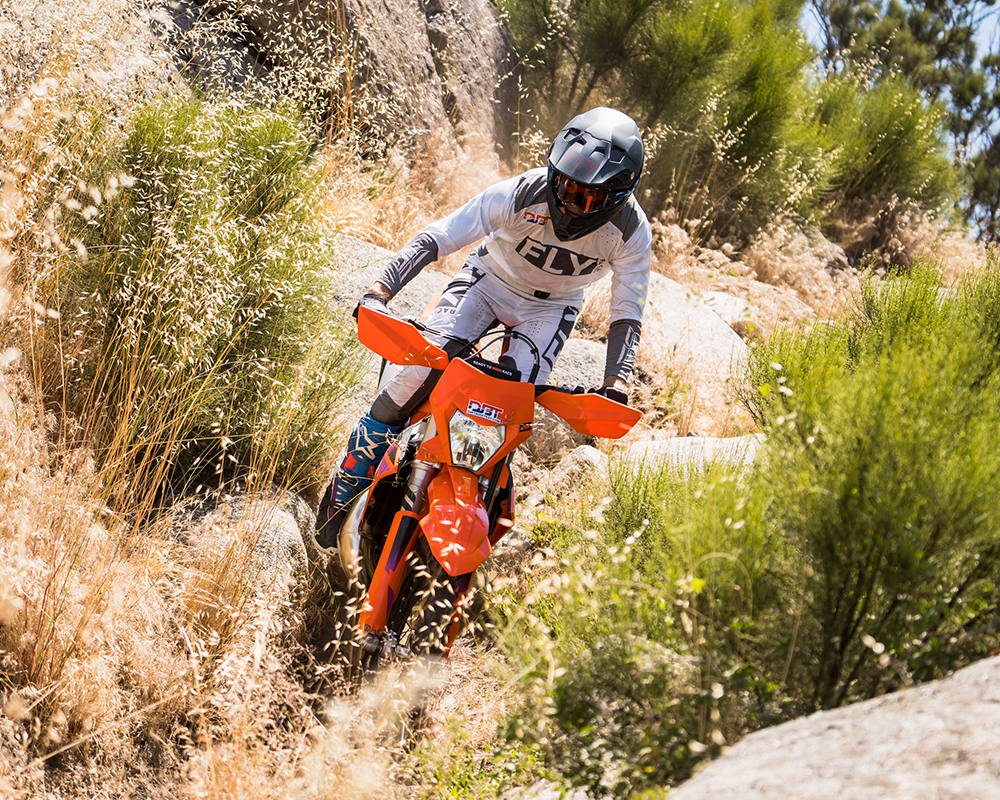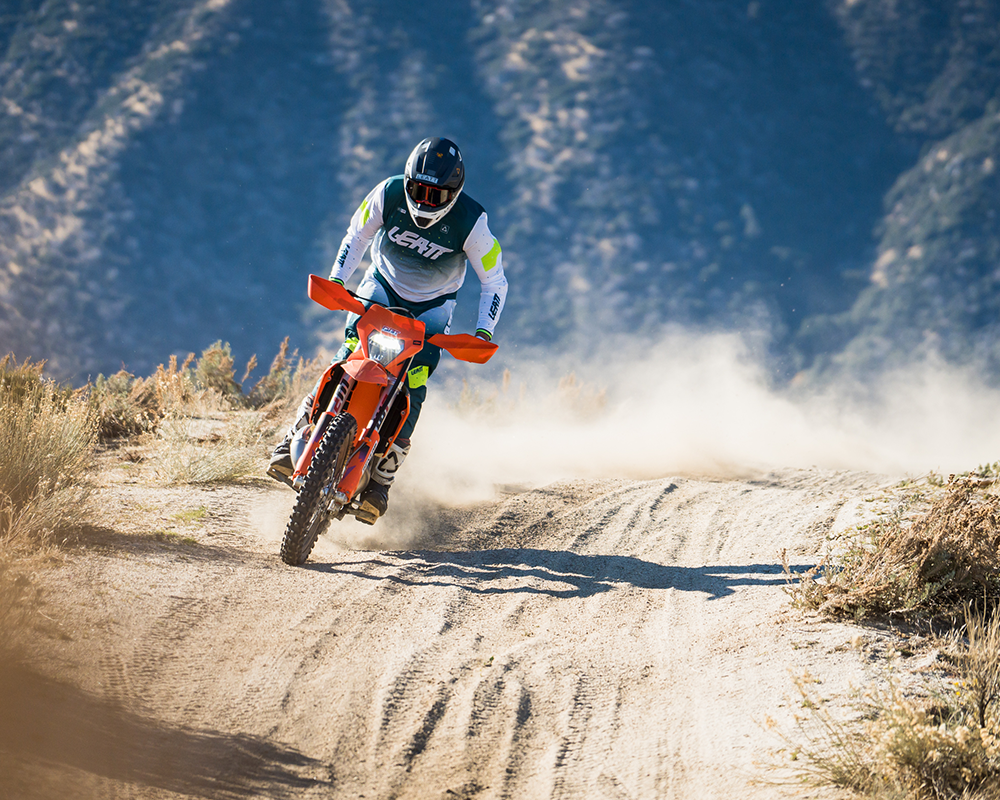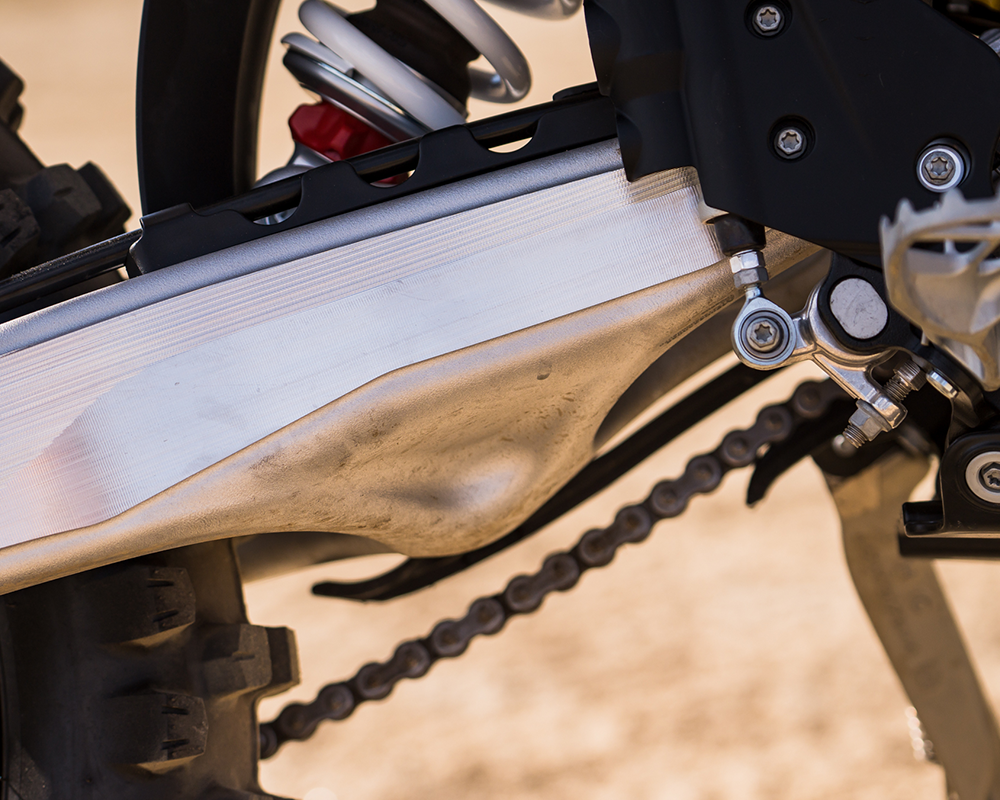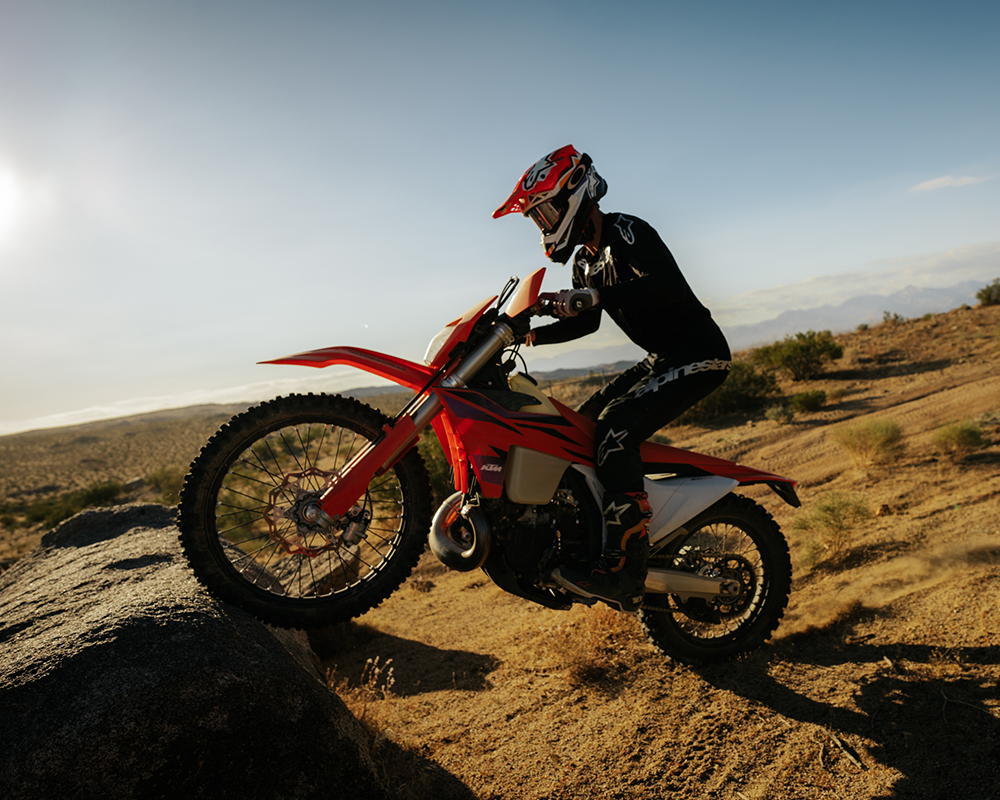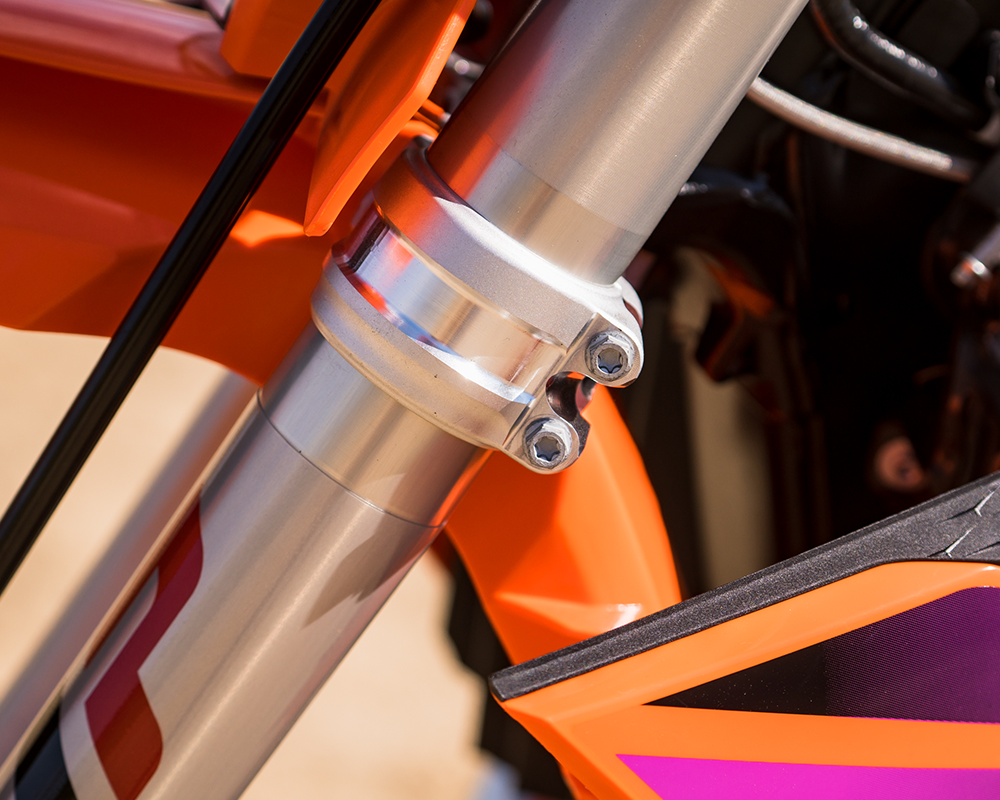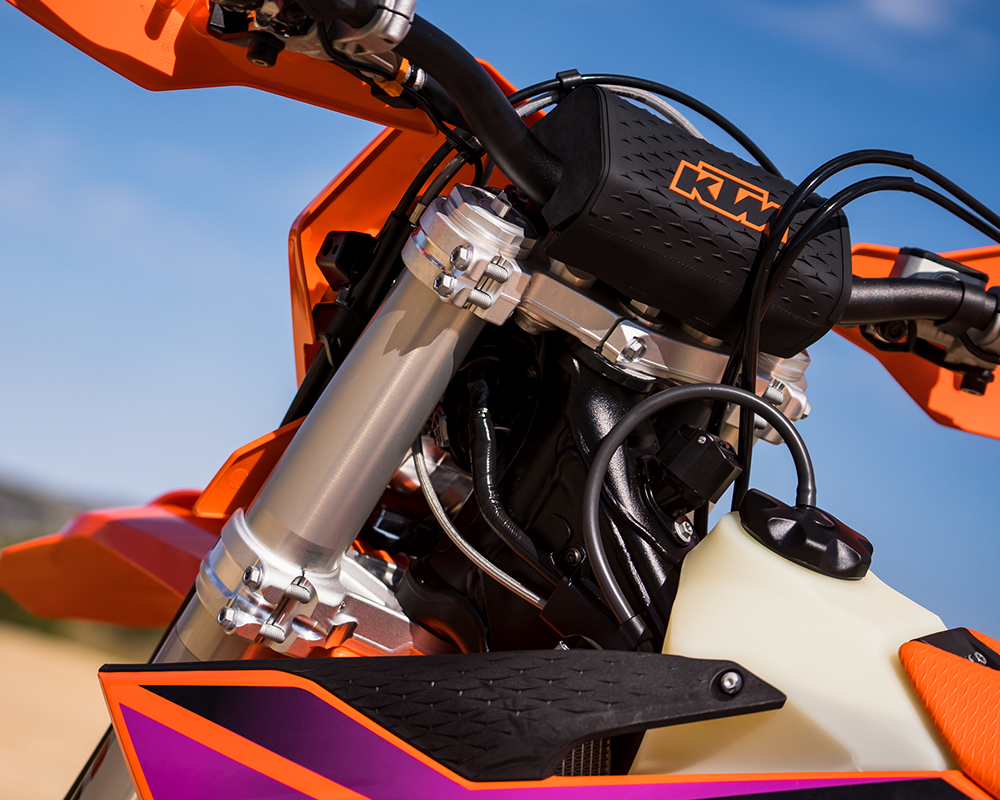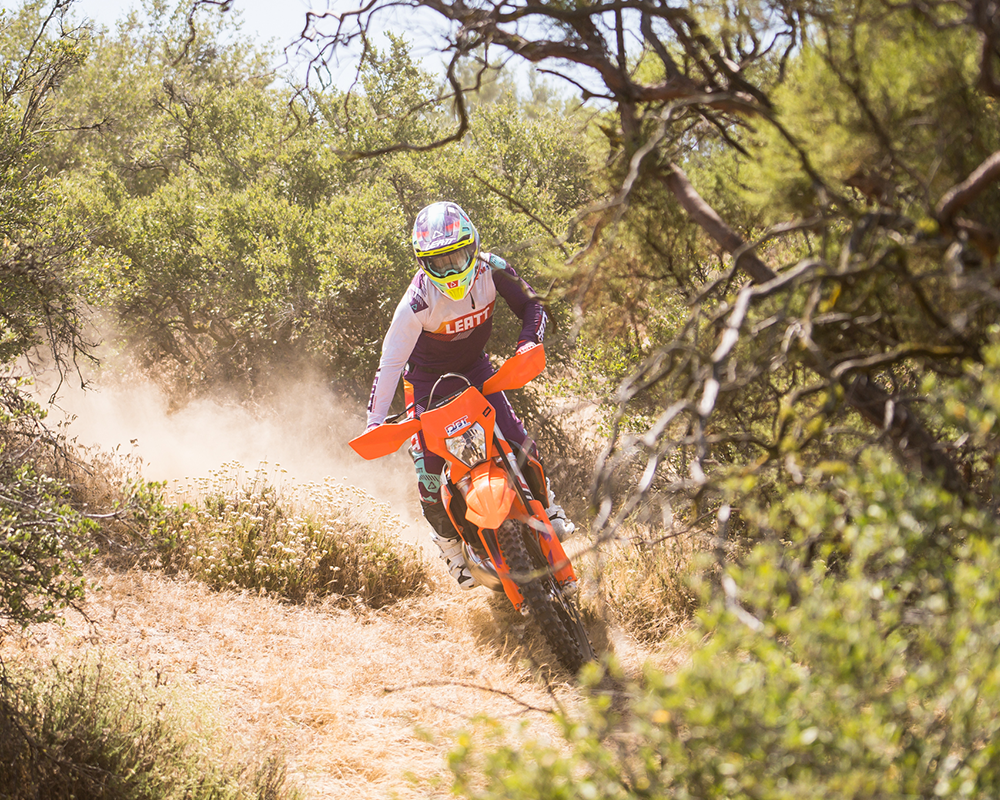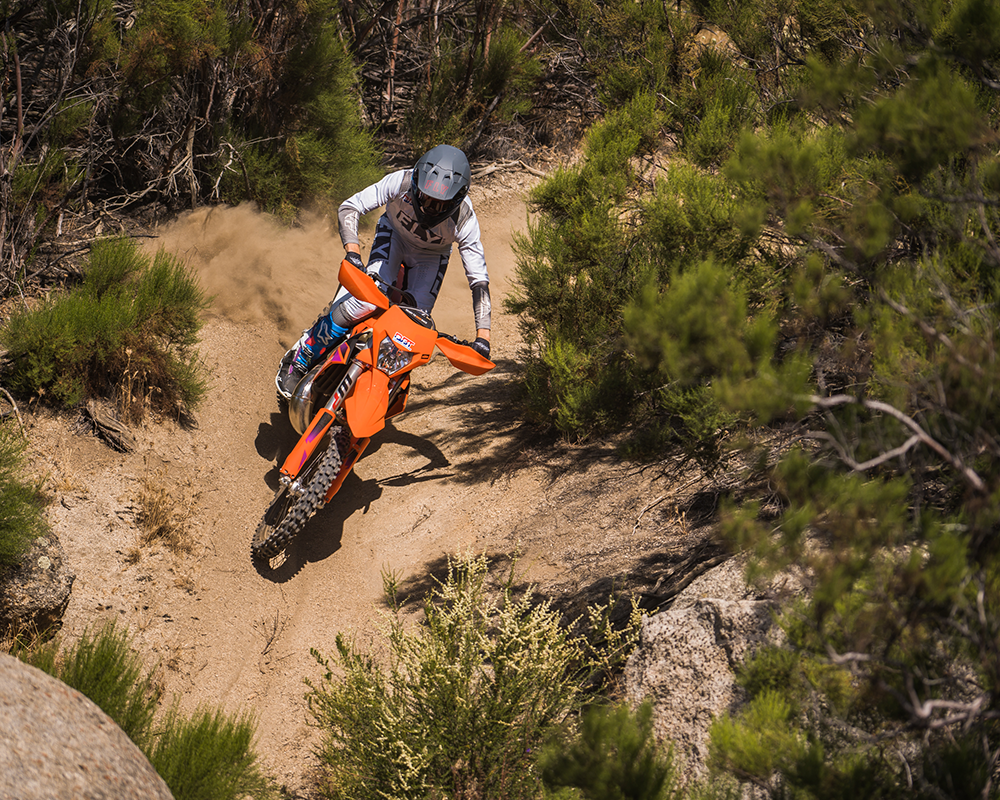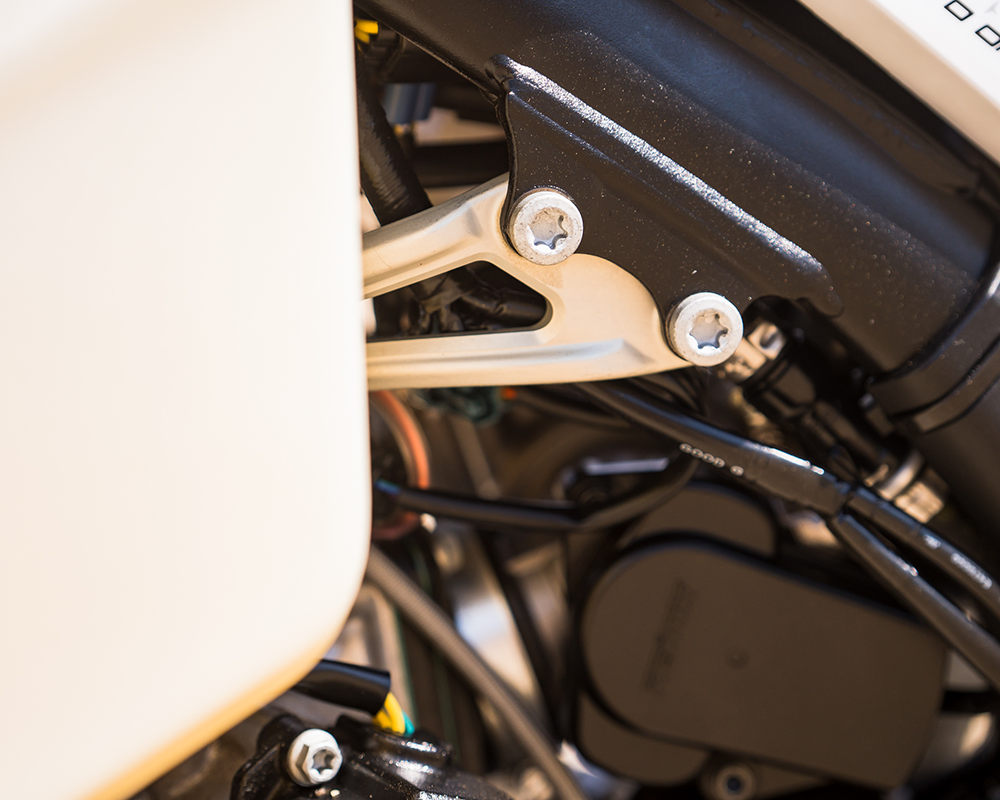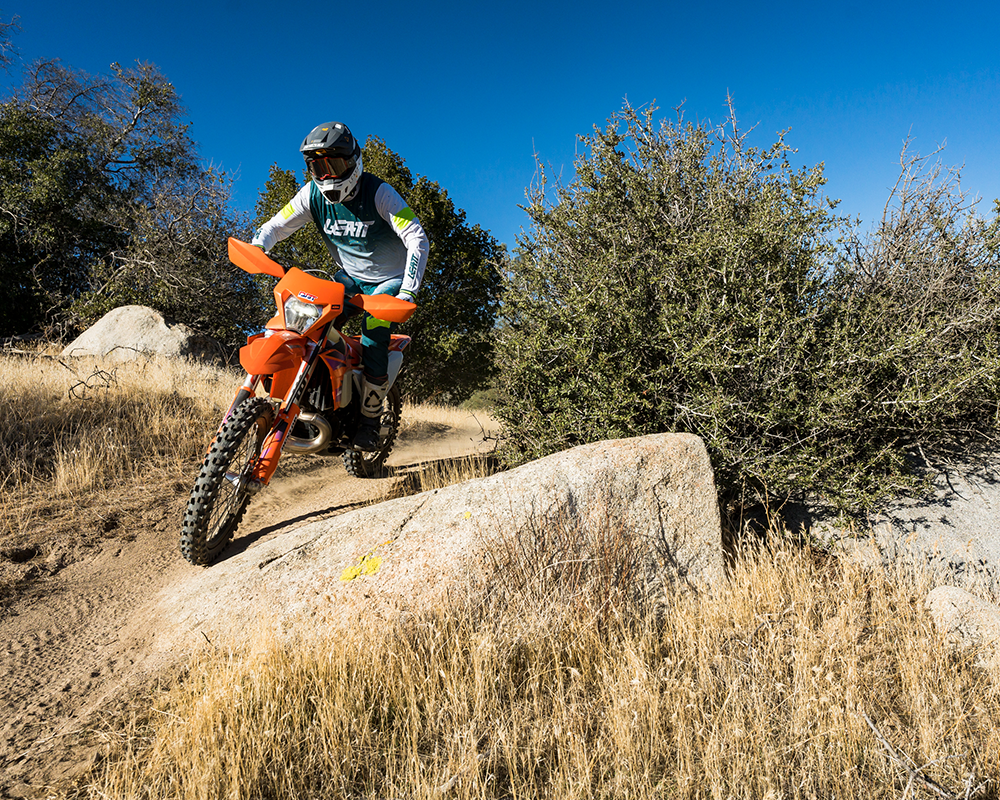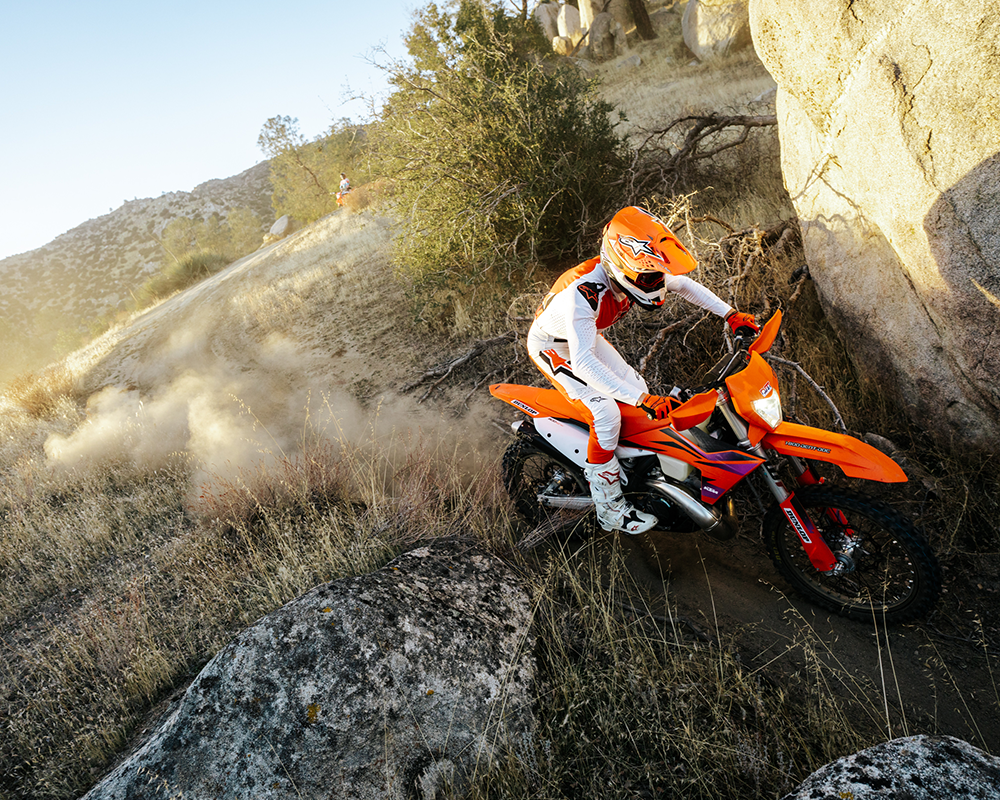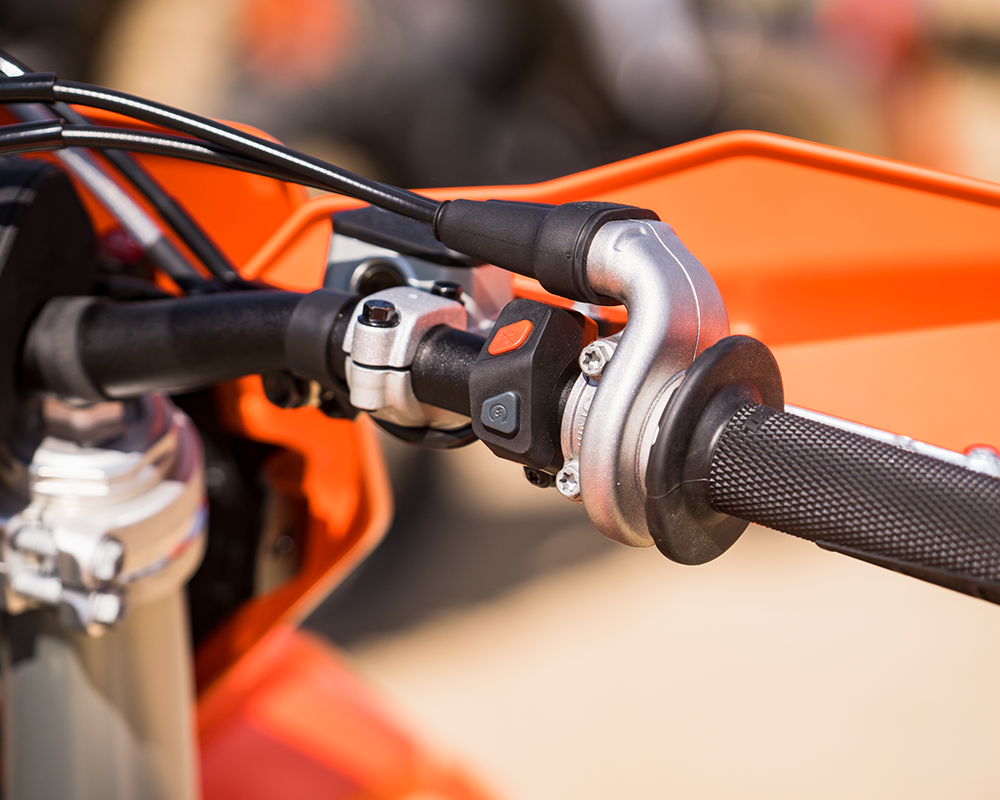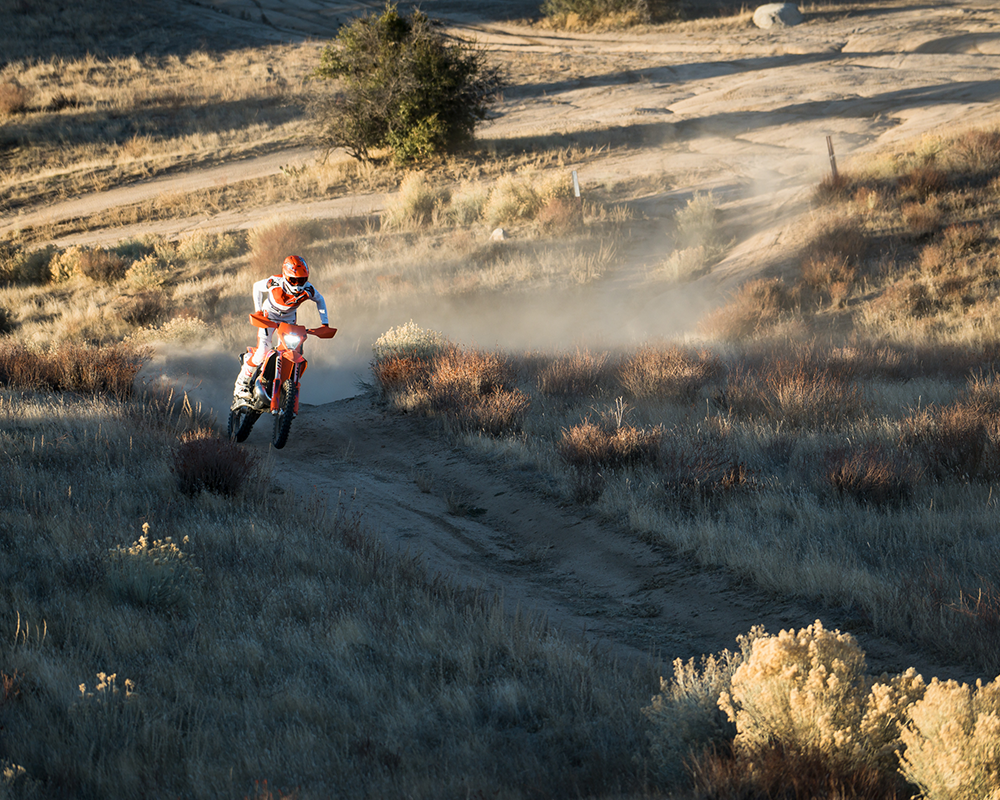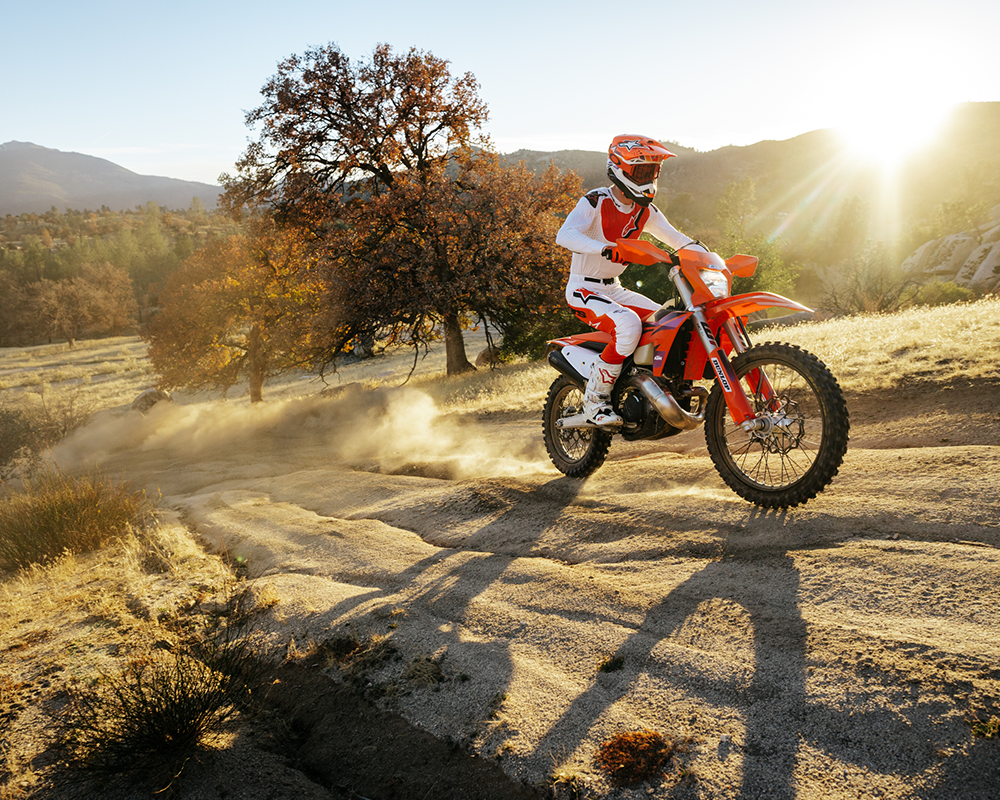2024 KTM 300 XC-W
How Good Is Too Good?
MSRP: $11,449
- Suspension package is tuned well for trail riding.
- TBi motor is an improvement from TPi for most riders.
- Chassis handling isn't as polarizing as other KTM models.
- Some areas of the bike are harder to work on.
- The radiator cap is near impossible to remove by hand.
- New fuel pump/tank design is faulty in certain areas.
Introduction
- Big bore off-road two-stroke.
- Enduro-focused bike.
KTM is constantly evolving its expansive lineup of bikes, and for 2024, the XC-W range underwent a complete overhaul to align with the direction of the SX and XC range of motorcycles. The 300 XC-W is KTM’s big bore two-stroke, enduro-focused bike that comes equipped with lights and everything that you’d expect out of a “competition trail” bike.
Changes
- All new bike from the ground up.
- New Throttle Body Injected engine.
- Closed-cartridge spring fork.
- Updated chassis and styling.
This bike is all new for 2024. The frame boasts the new “anti-squat” design with an isolated shock tower and reworked angles and flex characteristics throughout the entire frame. The overall frame is narrower and is claimed to offer “better” rider feedback, energy absorption, and stability. The new subframe is a two-piece unit with an aluminum lower paired with an injection-molded polyamide upper piece. The swingarm has been redesigned to match the new chassis characteristics, along with a 22mm rear axle. New forged triple clamps are claimed to offer a more comforting front-end feel with updated bar mounts and NEKEN handlebars to match.
The big change here is the removal of the WP Open Cartridge Spring Fork and the arrival of the new WP XACT Closed-Cartridge Spring Fork, the same component found on the XC race bikes. Sitting at 940mm in length (up from 928mm with the XPLOR fork), the new 48mm coil-spring fork features a new mid-valve piston, a hydro stop in the bottom 68mm of travel, and tuning specifically for the XC-W model. All clickers can be adjusted by hand with no tools required.
The PDS shock has been updated with a new main piston and bearing seals, along with updated lengths to match the new chassis. Like the fork, the shock can be adjusted by hand with no tools required.
The biggest change here is arguably the new engine. The Transfer Port Injection system is now a thing of the past and Throttle Body Injection (TBi) has found its way onto all of KTM’s new full size two-strokes. Fed by a Keihin 39mm throttle body, the new motor features an electronic power valve that is optimized by the engine’s RPM and throttle position. The XC-W engine is still counterbalanced and employs a 6-speed wide-ratio transmission as it did previously.
Power
- Very smooth, torquey power with more excitement than the TPi predecessor.
- Electronic power valve is tuned conservatively but has a lot of potential.
- No vibration.
With its designation being more focused on trails and enduro type riding, the smoother power is as expected. We feel it’s a step in the right direction coming off the TPi engine design and has a lot more potential in it.
The delivery of the power is smooth from top to bottom. It has a very lightweight feel throughout, with some flywheel mass and loads of torque down low but becoming less and less as the RPMs build. As the revs build, there is less inertia felt which leads to the bike feeling very agile and nimble. However, it’s deceiving in how much power it’s actually making. The speed you carry on this bike far outweighs what is felt through the bike which is a good thing. Something the older TPi bikes lacked in the sensation of feeling fast when you’re actually going fast and this bike suffers from that a little bit, but not nearly as much. We’d say it sits right in the middle of a carb bike and a TPi bike in terms of the excitement and fast sensation.
But don’t get us wrong – it’s fast on top and it’ll lug and chug at the lowest of RPMs without bogging, loading up, stalling, etc. And the roll-on is cleaner than that of the old TPi bikes.
The 6-speed wide-ratio transmission is really good. First gear is plenty low enough for slow, technical terrain and sixth gear is tall enough to hit 90 MPH with stock gearing. The Brembo hydraulic clutch works well and is effective as usual with KTM. It has good modulation, and a quick hit to the clutch helps bring this engine to life when needed.
Vibration is nonexistent on this machine. Surprisingly for a two-stroke, we’d even go as far to say it vibrates less than some modern four-strokes.
Although the KTM’s don’t come standard with it, the Orange Brigade installed the optional map select switch for us (retails for ~$150) with a standard Map 1 and a more aggressive Map 2. Map 1 limits the power valve to open only to 80% while Map 2 allows it to fully open to 100%. The only difference really felt is on top end and our young, aggressive riders preferred the green map in the more open terrain. Though, most riders felt it was hard to notice a difference in most terrains.
If there’s one thing we wish we could do to this bike, it’s that we’d like to be able to adjust the power valve more with an app or tuner like Yamaha and now Kawasaki have. We’ve experimented with some different ECUs and tuning options and we know how big of a difference it can make which shows just how much potential is in this motor even though KTM is being conservative with their tuning with this first model year.
The location of the fuel pump on these new bikes is not great. Because it sits up so high, if you’re riding down a smooth road without the gas sloshing around, it stops picking up the fuel and will run out of fuel even though it has fuel in the tank. Also, the oil tank is very difficult to see, and we had intermittent problems with the oil light working when needed and not working, which led to us running out of oil one time. The fix was rather simple with just a new piston and rings, and cleaning up the cylinder, but it is something to be aware of.
In normal trail riding, fuel economy ranged from 22-32 mpg with the 2.37 gal tank depending on how aggressive we were with the throttle and averaged 100-150mL of pre-mix for every two gallons of gas burned.
Suspension
- New XACT closed-cartridge spring fork is an improvement.
- Shock is on the softer side for heavier riders.
- Average sized riders were happy with minimal clickers changes.
We were never the ones to really complain about the old WP XPLOR open cartridge forks. They worked well as a trail fork, and could be tuned properly. With that being said, the new WP closed cartridge spring fork is an improvement. It offers a more consistent feel throughout the stroke, and the adjusters are very effective in dialing in the performance of the fork.
For riders of a more average or below average side (<170 lbs), we rode the bike for hundreds of miles in the desert and in the mountains with little to no clicker changes. When going “race pace”, the softer nature of the suspension was apparent and we could look for a little more safety built in, but for regular trail riding speeds and anything other than big sand whoops, the suspension worked really well and was the least polarizing aspect of this bike.
For our heavier riders, the rear shock was on the softer side. As we went stiffer on the shock, it led to the rear end feeling high and affecting the performance of the forks. We feel just putting the right springs in this bike for heavier 200+ lb riders will make a drastic difference for the better.
We do like the ability to adjust every clicker by hand with no screw drivers needed, making for easy trail-side tuning. Our rebound adjuster got a little sticky after a muddy day at one point but loosened up.
Something that may go a little unnoticed is the forks on this bike are 940mm, 10mm shorter than WP’s air fork. At times, some of our riders felt the front end to be a little low feeling, but adjusting the fork height wouldn’t necessarily be the absolute best solution. For those that were looking for a better balance, we ran a little more sag, close to 110mm, and that helped remedy the low feeling front end which we feel is in part due to the shorter fork length.
Jimmy’s Settings –
Shock: Low Speed Comp: 2; High Speed Comp: 1.25; Rebound: 20
Fork: Comp: 10; Rebound: 19
Chassis - Handling
- Lighter feeling, yet more stable chassis.
- Very planted on the trail.
- Well put together machine.
The chassis on the new gen KTM’s are a decisive topic amongst Pro racers, media, and casual riders alike. We’ve experienced some nuances with the chassis ourselves on the XC lineup, but the XC-W and this 300cc two-stroke in particular has its own traits.
The rear of the motorcycle has a stiffer feeling (the center of the seat and back). When you hit a rut, bumps, roots, etc, with the rear wheel it doesn’t have as much give and compliance and that gets translated back to the rider, mainly through the footpegs. Lowering the torque of the swingarm pivot 5-10% can help free this up a little, but constantly checking the torque should be a standard maintenance check moving forward.
The front end of the bike doesn’t have that same rigid feeling that we felt on the XC-F bikes, and part of that can be simply due to the forged triple clamps used on the XC-W. The added flex given by these clamps lessens the feedback to the riders hands and offers more comfort.
For a 300, it feels poppy, playful, and light, and feels less than its scale weight. However, it feels heavier than the past KTM 300 two-strokes, though we don’t think that’s a bad thing. It gives the bike a more planted sensation and less dancey and deflective. The front end has some weight to the bars which adds some stability and comfort to it. The wheelbase feels short, which is counterintuitive to being stable yet it is very stable, and if you’re one who weights the handlebars a lot, this works well. But, if you weigh the bars and have the rear end high, it can lead to a nervous feeling on the front end. Overall, it has a lighter feeling but added stability and planted.
More on the planted feeling, this bike is very good at maintaining traction. In comparison to some other bikes, this XCW feels like it’s always hooking up and finding traction. Part of that is due to the power delivery, but the chassis and suspension play a big part in it and it’s very confidence-inspiring when you can maintain a level of traction.
In working on and living with this bike, it has become harder in some ways. A lot of the design and fitment of things is very clean and sleek, but it makes it harder to remove and work around. With time, we’ll learn all the little tricks and tips as we would with any bike, but we feel this bike has taken a small step back in ease of use when working on it.
We can’t believe it’s taken this long, but the stock headlight is actually usable on this bike. The new LED bulb is brighter than a candle and can get you back in the dark safely, though we did break the outer shell at one point.
Conclusion
- A "vanilla" package that's hard not to like.
- A well-rounded off-road bike.
We say it all the time, but it rings true with KTM’s new 300 XC-W – it’s a very impressive bike. However, it’s a decisive bike. If anyone just rode this bike, it’d blow them away. But if they were really familiar with another bike or were jumping back and forth like we were (with a Beta 300), the “vanilla” character would shine through. In a way, the bike is almost too good and the lack of faults in it doesn’t excite some riders the way it does others. This bike appeals to the masses and we’d be hard pressed to find anyone that would jump on this bike and at least not like it and feel comfortable with it. It’s less polarizing in that you won’t find many haters, but you won’t find as many die-hard lovers either. With 50+ hours and a thousand miles on it in stock trim, we have a very solid base of how this bike works and we plan on making some small but significant modifications to get some more character out of the KTM.
Recent Product Tests
Leave a Reply
